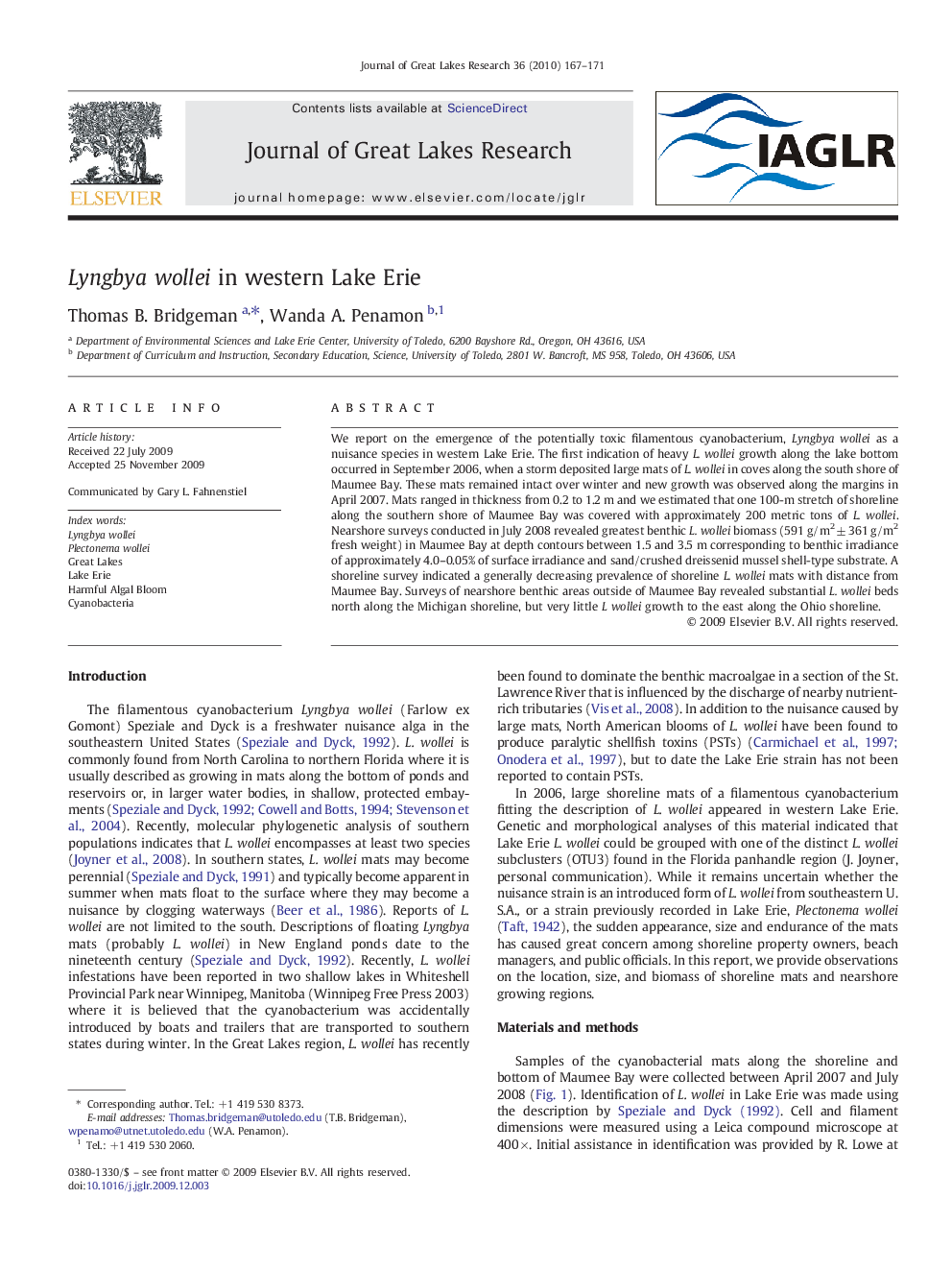| Article ID | Journal | Published Year | Pages | File Type |
|---|---|---|---|---|
| 4399054 | Journal of Great Lakes Research | 2010 | 5 Pages |
Abstract
We report on the emergence of the potentially toxic filamentous cyanobacterium, Lyngbya wollei as a nuisance species in western Lake Erie. The first indication of heavy L. wollei growth along the lake bottom occurred in September 2006, when a storm deposited large mats of L. wollei in coves along the south shore of Maumee Bay. These mats remained intact over winter and new growth was observed along the margins in April 2007. Mats ranged in thickness from 0.2 to 1.2 m and we estimated that one 100-m stretch of shoreline along the southern shore of Maumee Bay was covered with approximately 200 metric tons of L. wollei. Nearshore surveys conducted in July 2008 revealed greatest benthic L. wollei biomass (591 g/m2 ± 361 g/m2 fresh weight) in Maumee Bay at depth contours between 1.5 and 3.5 m corresponding to benthic irradiance of approximately 4.0-0.05% of surface irradiance and sand/crushed dreissenid mussel shell-type substrate. A shoreline survey indicated a generally decreasing prevalence of shoreline L. wollei mats with distance from Maumee Bay. Surveys of nearshore benthic areas outside of Maumee Bay revealed substantial L. wollei beds north along the Michigan shoreline, but very little L wollei growth to the east along the Ohio shoreline.
Related Topics
Physical Sciences and Engineering
Earth and Planetary Sciences
Earth and Planetary Sciences (General)
Authors
Thomas B. Bridgeman, Wanda A. Penamon,
